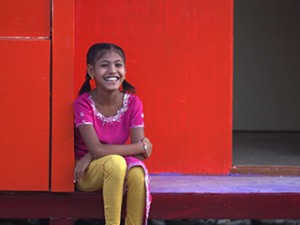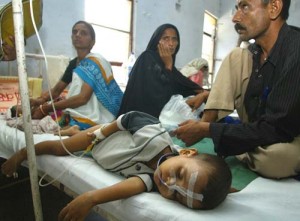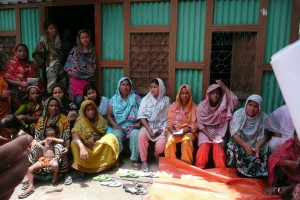
E+O’s holistic approach to incubating scalable initiatives is grounded in our own market research, as well as the excellent research done by other mission-aligned organizations in the fields of housing, healthcare and skill-building.
 Housing
Housing
- About 1.6 billion of the world’s people live in substandard housing, often without access to clean water or sanitation. —United Nations
- About one third of these homes are vulnerable to floods, landslides, hurricanes and earthquakes.
- By the year 2030, an additional 3 billion people, about 40% of the world’s population, will need access to housing. This translates into a demand for 96,150 new affordable units every day and 4,000 every hour. — UN-Habitat
- Every week, more than a million people are born in, or move to, cities in the developing world. As a result, the urban population of developing countries will double from 2 to 4 billion in the next 30 years. —Kissick et al.
- As much as 70% of the urban housing stock in sub-Saharan Africa, 50 percent in South Asia, and 25% in Latin America and the Caribbean is of poor quality and not in compliance with local regulations. — Kissick et al.
- More than 20% of the world’s population struggles, on a daily basis, to stay in houses or on land where they live; and more than 80% of the world’s population does not have legal documentation of their property rights. — Habitat for Humanity International
- In India and Bangladesh alone, 180 million house are made of temporary materials, with an additional housing shortage of 32 million (predicted to double by 2030).
 Preventive Healthcare
Preventive Healthcare
- The World Health Organization estimates that 94% of diarrhea cases are preventable through modifications to the environment. Diarrhea episodes are reduced by 25% through improving water supply, 32% by improving sanitation, and by 39% via household water treatment and safe storage. —WHO
- 443 million school days are lost every year due to water-related illness. For every $1 invested in clean water and sanitation, $8 is returned in increase productivity. — Water Aid
- 42% of the world’s population has no access to basic sanitation, creating 3 million sanitation-related disease episodes and 6,000 premature deaths every year. This figure could be reduced by more than 75% with proper sanitation and water management. — World Toilet Organization
- Across the world, an estimated 11 million children under age five die each year from preventable or treatable diseases. In Cambodia, diarrhea diseases account for 17% of deaths in children under 5 and 11% of the total deaths. —WHO
- At any given time, close to half of all people in developing countries are suffering from a disease caused by water and sanitation deficits. — Global Issues
Skill Building
- In Cambodia only 27% of women in rural areas and 56% in urban areas complete the 5th grade. In Southeast Asia, the fertility rate is 35% lower for women with seven or more years of education than for women with none. — Haley B. and Morduch J.
- Across the world, 104 million children aged between 5 and 12 do not attend school; another 150 million leave school illiterate. In South Asia, there are 18 million out-of-school children.
“Charity is injurious unless it helps the recipient to become independent of it.” — John D. Rockefeller
 E+O’s holistic approach to incubating scalable initiatives is grounded in our own market research, as well as the excellent research done by other mission-aligned organizations in the fields of housing, healthcare and skill-building.
E+O’s holistic approach to incubating scalable initiatives is grounded in our own market research, as well as the excellent research done by other mission-aligned organizations in the fields of housing, healthcare and skill-building.
 Housing
Housing
 Preventive Healthcare
Preventive Healthcare

